PM or particle pollution are microscopic aerosols, dust particles, and water droplets suspended in the air or the atmosphere. They are known to cause various dis-harms causing a variety of cardiorespiratory disorders and aggravation of respiratory illnesses such as asthma, bronchitis, pneumonia, etc. Breathing in PM2.5-contaminated air can irritate the eyes, nose, throat, and respiratory tract. Therefore we need to know the different techniques for measuring PM2.5, especially in the areas with higher susceptibility to dust emissions.
“PM2.5 is designated as a Group-1 carcinogen by the IARC and the WHO. Hence, considered the most hazardous form of air pollution.”
– IARC & WHO
Introduction
Particulate matter is the fine microscopic or nano-particles suspended in the air. They can be volatile, semi-volatile, non-volatile, liquid, or solid. These particles have the capacity to enter deep into our lungs via respiration, and then enter into the bloodstream. The World Health Organization has set up some limits for PM2.5 concentrations. Therefore, the air quality exceeding those limits is considered unhealthy to inhale. Similarly, various authorities in India have set up some standards to measure and control excess PM2.5 concentration, especially in power plants, manufacturing units, construction and demolition activities, and many more such activities. Therefore, measuring PM2.5 becomes essential to comply with the standards. Monitoring and measuring PM2.5 is important to maintain the health of the workers and personnel as well.
The EPA defines fine particulate matter as particles less than or equal to 2.5μm in diameter that can only be seen with an electron microscope.
- Construction sites, fires, factories, power plants, smokestacks, unpaved roads, and cars all emit PM2.5.
- Because of the infiltrating ability of microscopic particles, health dangers grow as particle size decreases.
- Implementation of air quality guidelines and standards across the world to monitor and control PM2.5.
- This analysis is being led by OSHA, EPA, ASTM, and NIOSH.
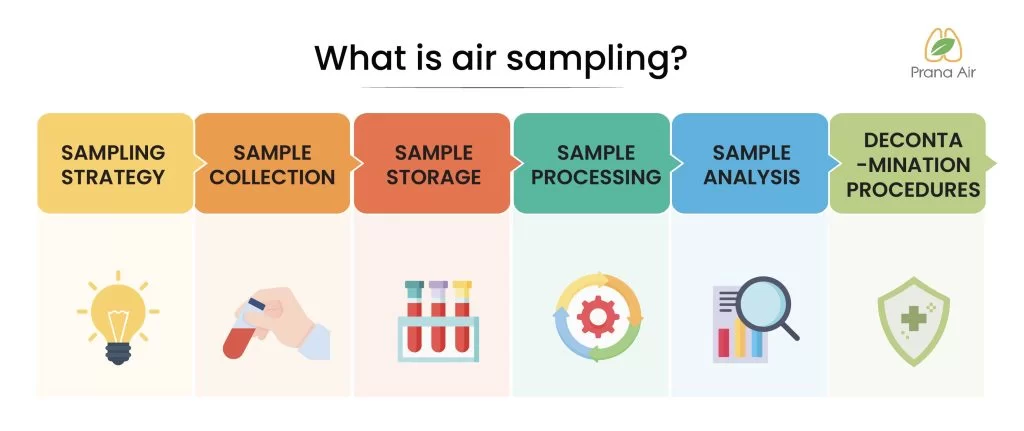
What is air sampling?
Air sampling is any method for taking a representative volume of air and analyzing its chemical, particulate, or radioactive contamination. This representative volume of air -> to calculate contamination per volume unit concentration. Compare this value to various guidelines and standards. We quantify air pollution through air sampling and monitoring.
– What is the need for air sampling, monitoring, and measuring PM2.5 and other air pollutants?
- For identifying and analyzing sources of air pollution.
- For assessing the environmental impact of power plant and manufacturing emissions.
- To find dangerous particles and airborne contaminants at work.
- To examine the emissions from vehicles and products.
- For adhering to all of the aforementioned government standards and regulations.
US EPA Measuring PM2.5 & PM10 (Dust) Testing Criteria
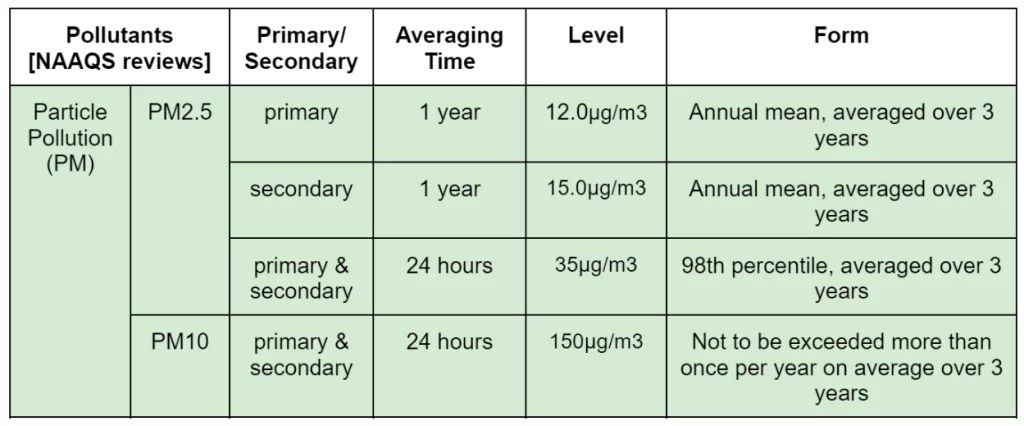
Air monitoring workflow
Samples are vacuum-collected on a filter or resin, is further processed by filter clearing, extraction, or ashing, and then evaluated using gravimetric methods, microscopy, or equipment.
The typical approach for a variety of different analytical techniques using air samples is shown here.
- Sample collection/preparation– samples are collected on filter by resin or vacuum
- Gravimetric analysis-Uses pre-weighted or matched weight filters.
- Mould- vac through media. In other words, use alternate technique of swab, wipe, tape, agar plate.
- Sample preparation
- Gravimetric- It is the most widely used technique to measure and therefore analyze the PM concentrations. Furthermore, it uses desiccation (MCE), PVC, GF, Quartz, etc.
- Microscopic- Microscopic particles, such as those with sizes between a fraction of a micron and hundreds of microns, are crucial for a number of processes, including the industrial management of aerosol production and impurity control. Solid particles with a smaller average diameter more than 10 µg/m3 (also known as PM10 particles) can have a severe negative impact on human health, causing additional health issues and creating illnesses like asthma.
- Analysis
- Analysis of the data measured by the various manual techniques. Analysis for further comparisons.
- Pre and post weighting of filters before and after the sampling.
- Particle sizing and counting
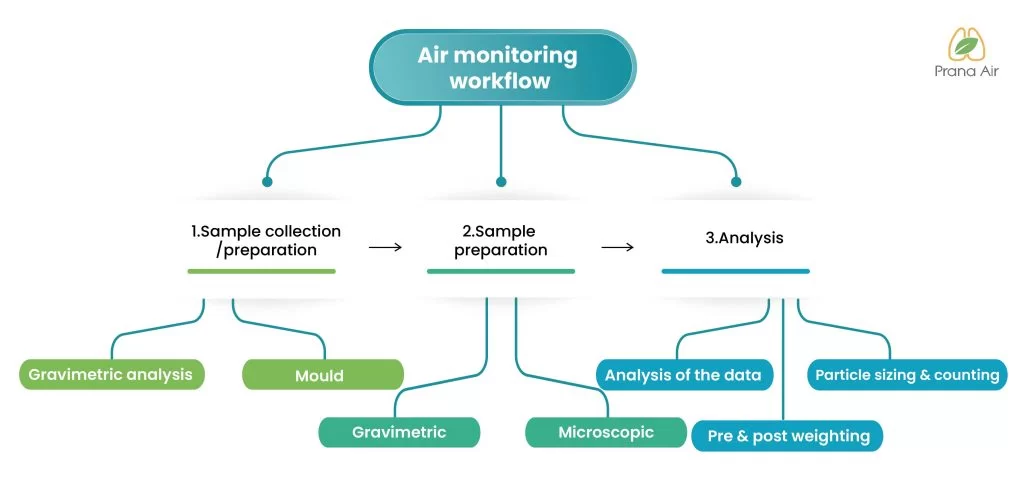
Techniques of measuring PM2.5
According to the WHO, air pollution kills 7 million people each year. Fortunately, most respiratory disorders can be avoided by improving air quality. However, to ensure that the limitations and clean air requirements are met, it is necessary to test and monitor the air quality. All the below mentioned dust measurement methods are traditionally used CAAQMS, which are still being used by various industries and government sites.
1. Gravimetric Method-
The collection and measuring of PM2.5 (Particulate Matter) by hydration, followed by gravimetric analysis and quantification, is one of the most widely used procedures for measuring air pollution. Such test stations can be found at providers of combustion, engine automobiles, aircraft, ships, and trucks, among other things. There are also environmental test stations that filter the air to determine the level of pollution. Examining these filters is required, no matter where the filtering is done. That means the particulate matter on the filters must be correctly weighed. To do this, the most precise balances are required. The samples are manually collected and then delivered to the labs for further analysis.
- Challenges while using gravimetric method:
(i) Accurate handling and weighing of a huge number of filters.
(ii) Correct labelling and sample handling to prevent confusion and errors.
(iii) In order to avoid contamination, a clean room environment is necessary.
(iv) It’s crucial to condition the filters properly.
(v) It’s important to process and properly analyse a large amount of data.
(vi) Smaller sample sizes emerge from stricter regulations, which necessitate more precise balances.
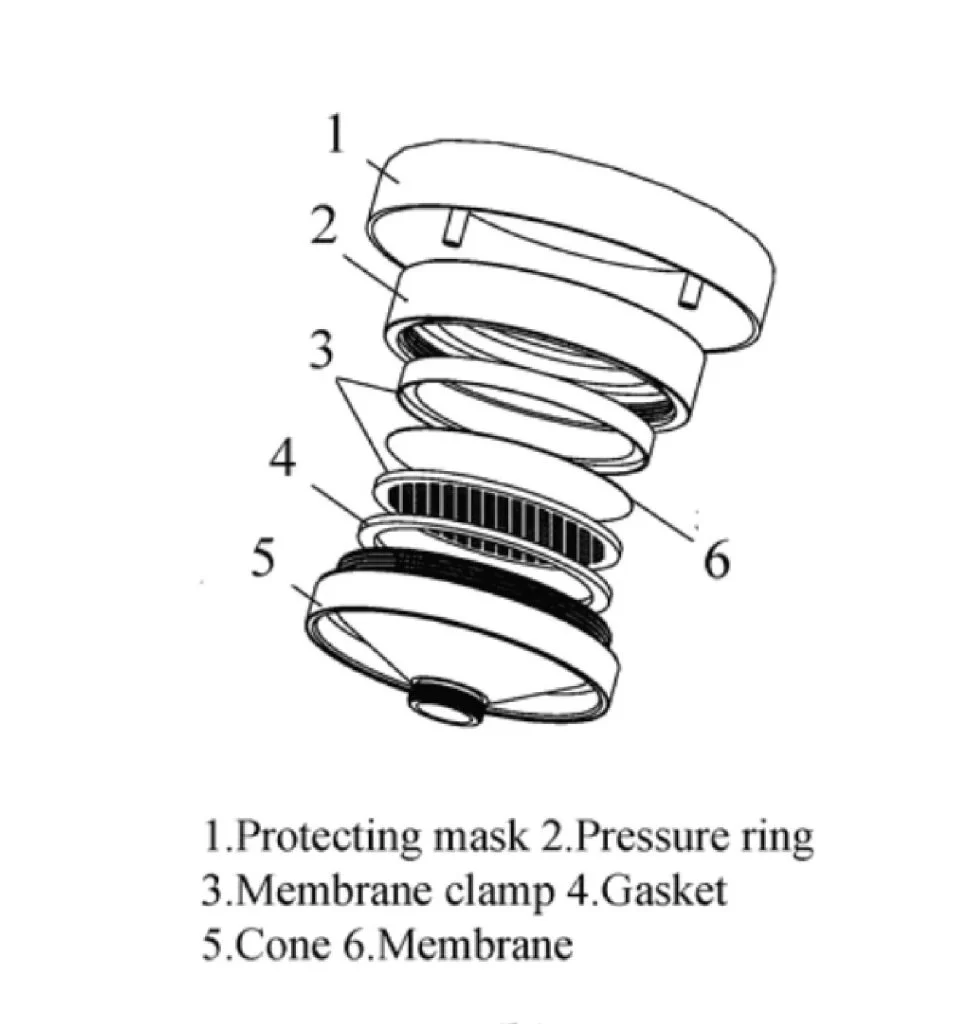
2. Beta ray Attenuation-
BAM is a continuous ambient air quality monitoring device that uses beta ray attenuation technique that works in the real-time. Uses of this device- to measure PM2.5 and PM10 for the users, authorities, and everybody that has an interest in air quality data. Essentially, changing this filter tape inside the BAM every 2-3 months by the user.
- How does it work?
The particulate-size selective inlet is located on top of the instrument, which usually protrudes through the monitoring enclosure’s roof. Because we need to quantify microscopic particulate matter, it separates the huge coarse particles (smaller than PM10). Then, after activating a pump linked to the BAM-> pushing of a huge volume of air via the inlet head. Gravimetrically drawn tiny particles (less than 10μm)-> onto the filter tape assembly.
BAM collects data for 1hr at a time. We take a beta attenuation measurement at the end of each hr. The more particulate matter settles on the tape during the hour, the less signal attenuation there is. The sensor can calculate the mass concentration of PM10 or PM2.5 over the course of an hour.
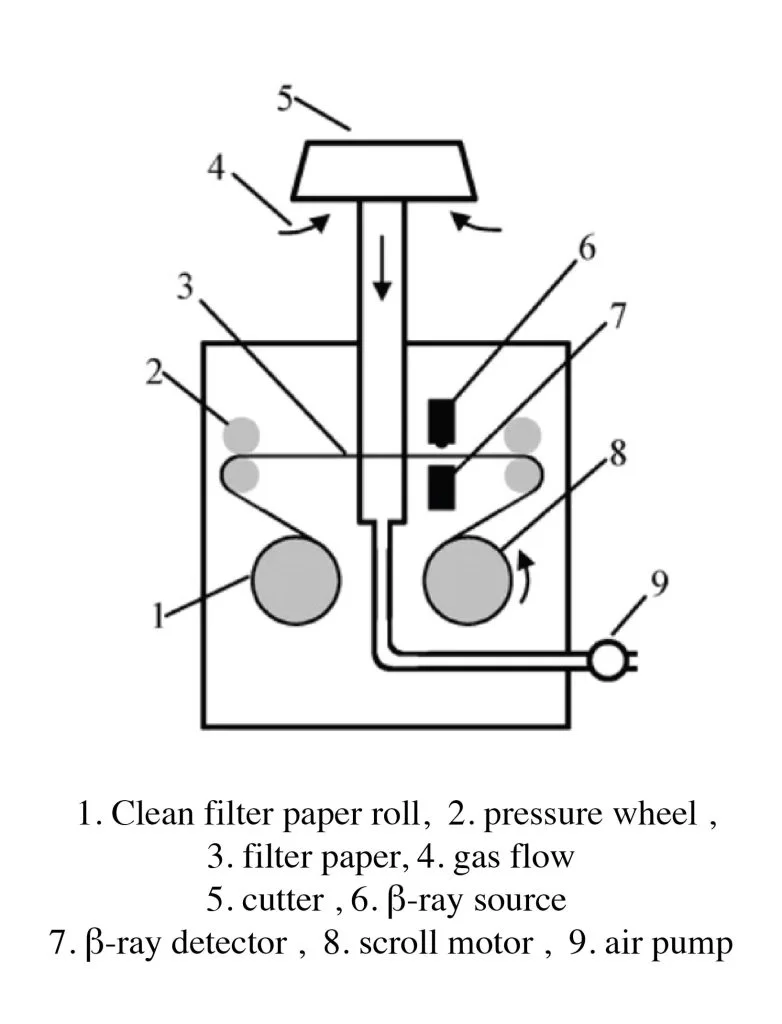
3. TEOM
TEOM stands for Tapered element Oscillating Microbalance. Usage- It is a method for continuously measuring particle pollution in the air. It has a fitted instrument with a coil driver and the size of a selective inlet. Therefore to sample the total suspended particulate. Air is drawn through a filter at the end of a tapered oscillating glass tube. Hence, the change in frequency is directly related to the mass of PM accumulated.
- How does it work?
A coil driver pulsates against a magnet on the tapered element to initiate an oscillating movement. An opposing magnetic field maintains the natural oscillation. Therefore, an air sample starts to flow through the system. Particulates collect on a filter set on top of the teal. Over time, particulate mass increases and weighs down against the teal reducing oscillation frequency. Hall effect sensor measures the change in frequency.
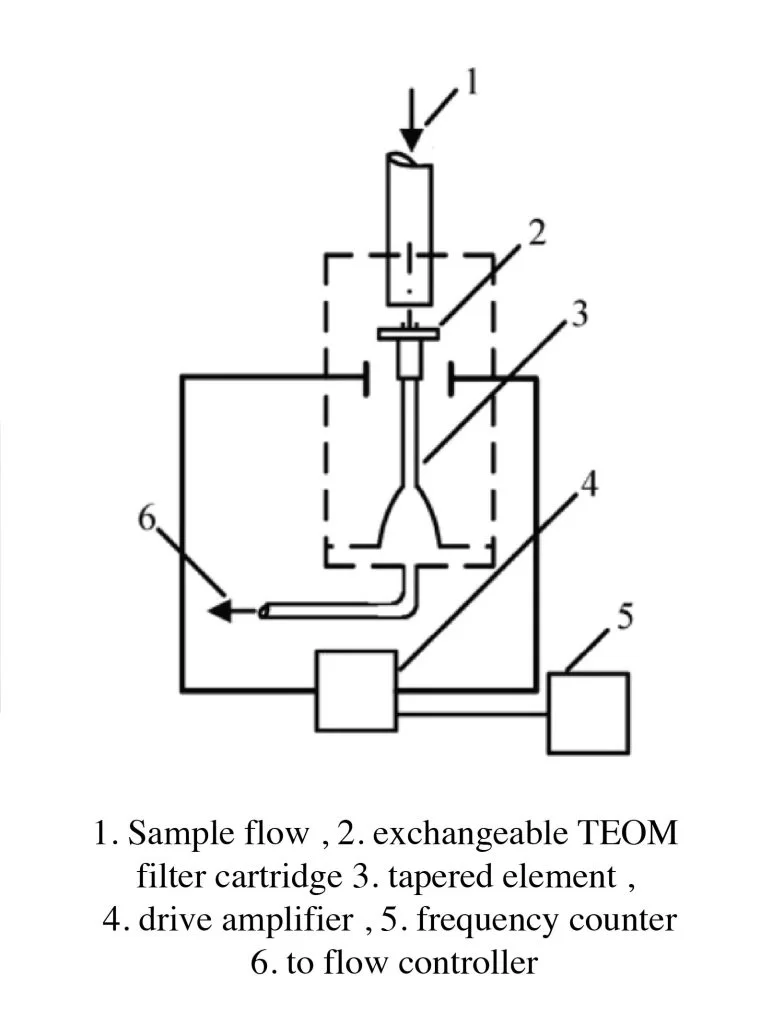
| Gravimetric Method | Beta Ray attenuation | TEOM |
| It is an off-line method to measure dust | Works on Real-time measurement principle | This method continuously measures PM in the air |
| PM pollution calculated using the sampling and weighing technique | The determination of dust pollution is based on how less the signal is attenuated. | Sampling is done on the basis of change in oscillation frequency |
| Filter needs to be changed everyday | The tape needs replacement every 2-3 months | Filter needs to be changed at least every 30 days. |
| 24hrs concentration average- from midnight to midnight | Collects data every hr. | TEOM computes the 1-hr, 8-hr, 12-hrand 24-hr averages of the mass concentration of Dust pollution. |
Measuring and monitoring PM (Particulate Matter)
Introduction of the new technologies to overcome the drawbacks of traditionally used methods to calculate PM.
LASER Particulate SENSORS operate on the optical 90° light scattering concept. Reflection of the light towards the sensor that strikes the mirror’s aperture at 90°. For as long as reflection of the light is there, the photodiode registers a pulse. Transformation of the electrical signal thus received, into a particulate matter concentration.
As more and more people are becoming aware of the air quality. Today, applications of air quality monitoring are not bound to just industrial and factory use. Hence, they are more eager and interested to know the air quality around their homes and workspace.
Introduction to many different techniques to measure and monitor different air quality parameters. For instance, 90° light scattering, electrochemical sensing, NDIR sensors, metal oxide sensors (MOS), etc.
This has raised the demand for affordable and accurate air quality monitors. Therefore, many companies including Prana Air have accepted the challenge of providing the affordable air quality monitors and sensors and meeting the upcoming demands of the customers.
The technology used in earlier times is accurate but extremely costly and hence is not affordable by the general public. In addition to that, they require a large area for deployment plus the maintenance costs are there. Other than that the data is available after 8-24 hrs. Thereafter, the data is accessible on government sites, and available for the general public to view.
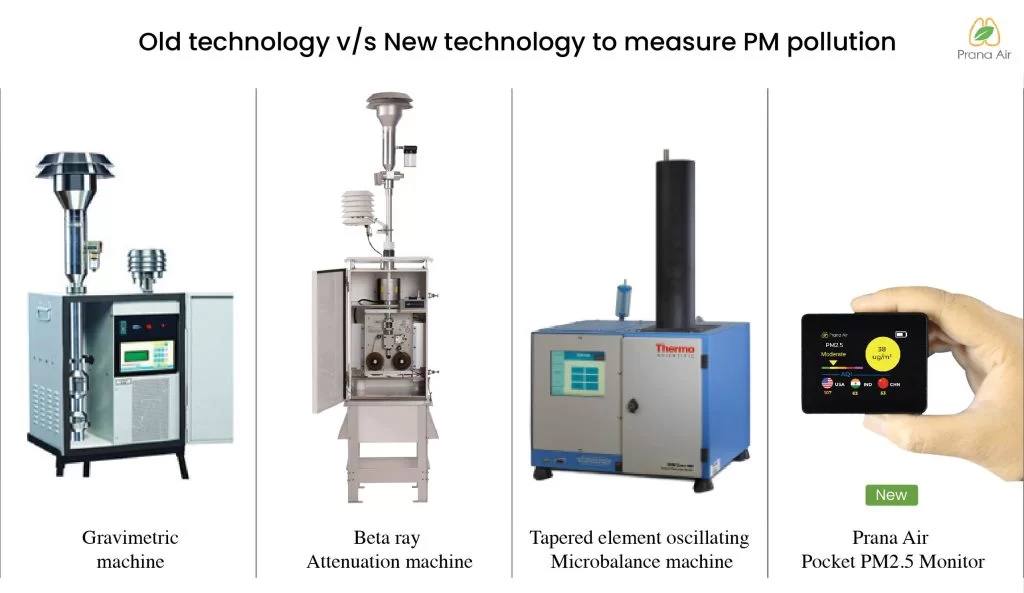
But, modern day technology is overcoming all those drawbacks. These are:
Pros of the new age methods:
- Small and handy, hence easily portable
- Low cost and pocket friendly
- Data accessibility and analyzing on a personalized dashboard.
- Highly accurate
- No such maintenance costs
- Different monitors and sensors on the basis of customer requirements.
- Real-time data monitoring
- Historic and real time analysis is easier.
- More than one air pollution parameter displayed on selected devices.
- Calibration and monitoring takes a few seconds.
Particulate testing: Traditional v/s New methods
| Traditional methods to measure PM | New methods to measure PM | |
| 1. | Detects all pollutants by different technology such as BAM, Improved West and Gaeke etc. | Detects PM10, PM 2.5, including other air pollution parameters in a single monitor. |
| 2. | Huge and bulky in size. Hence restricted portability. | Compact and lightweight, hence easy portability. |
| 3. | Provide levels of worker exposure to dust over the course of an entire working shift | Provides the PM levels in real-time. |
| 4. | This method is not capable of showing dust level variations in real-time over a working shift | Capable of showing dust level variations over a working shift. |
| 5. | This method cannot show the variations in dust levels over the course of that shift. | This method can show the variations in dust levels over that course. |
| 6. | Extensive manpower is required. | No such manforce required. |
| 7. | Installing and maintenance costs are very high. | Maintenance and installation costs are very low. |
| 8. | Filter/tape change is required. | No filter change is required. |
| 9. | Centralised government sites. | Customized accessibility to website, mobile & TV app |
| 10. | Slightly complex connectivity. | Easy connectivity. |
Sources:
- https://en.wikipedia.org/wiki/Particulate_pollution#:~:text=Particulate%20matter%20(PM)%20is%20generally,particles%202.5%20%CE%BCm%20and%20smaller.
- https://www.cdc.gov/niosh/mining/UserFiles/works/pdfs/poalsd.pdf
- Image sources: https://www.mdpi.com/2077-0472/12/7/1038/htm ; http://bit.ly/3Axu0LD ; http://bit.ly/3VctRp4 ; http://bit.ly/3UW0urk







